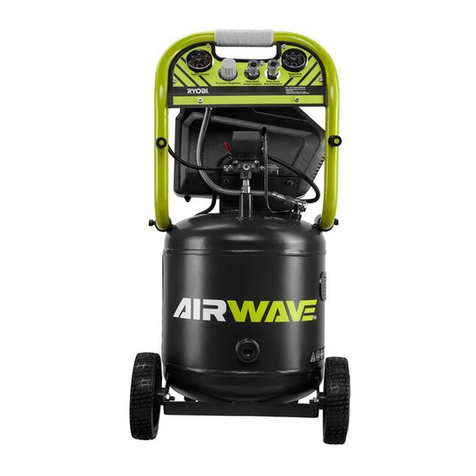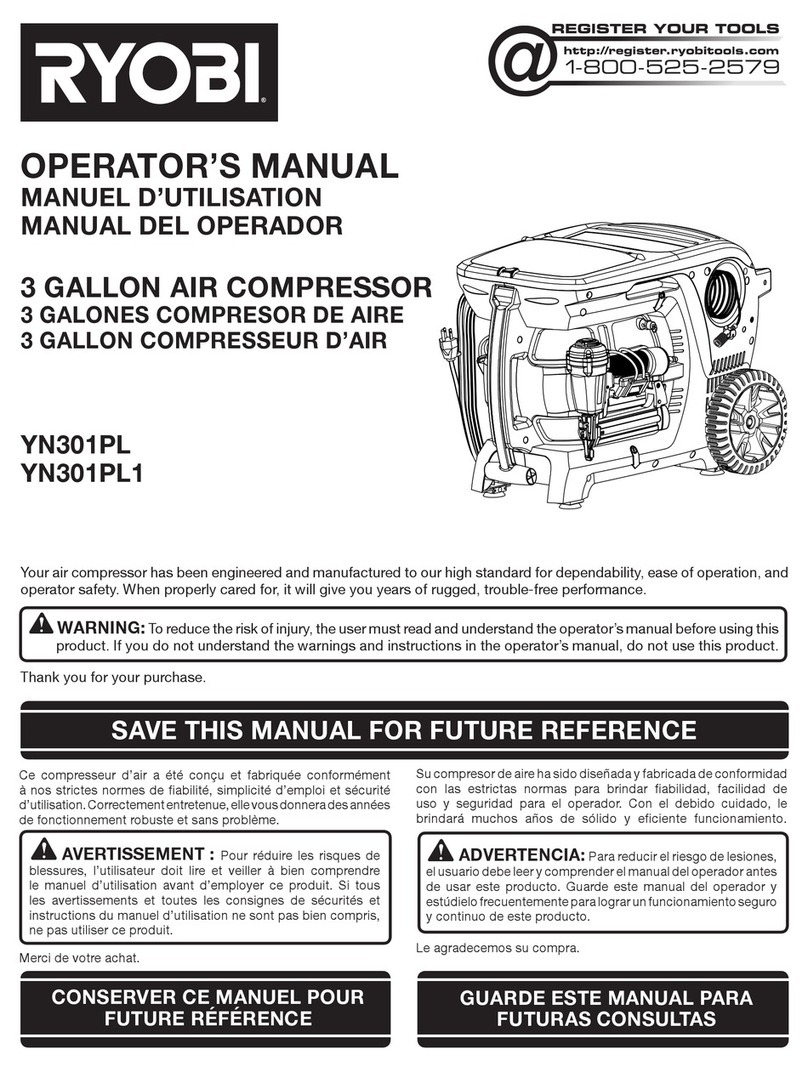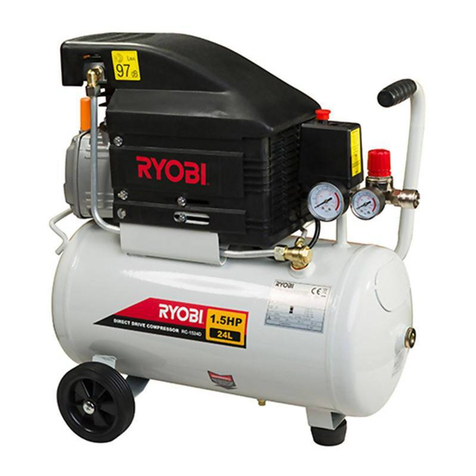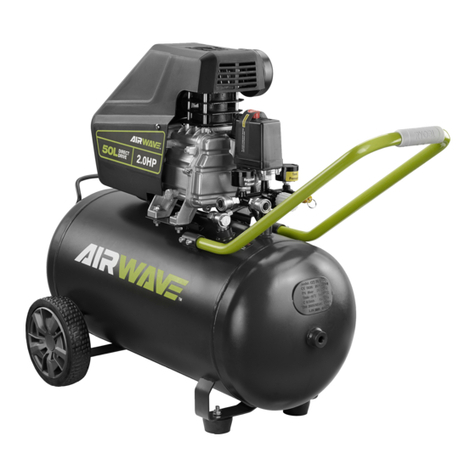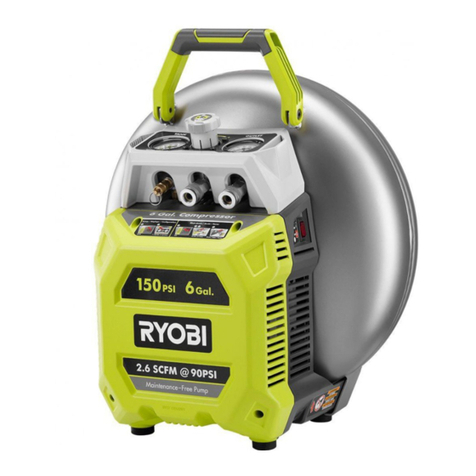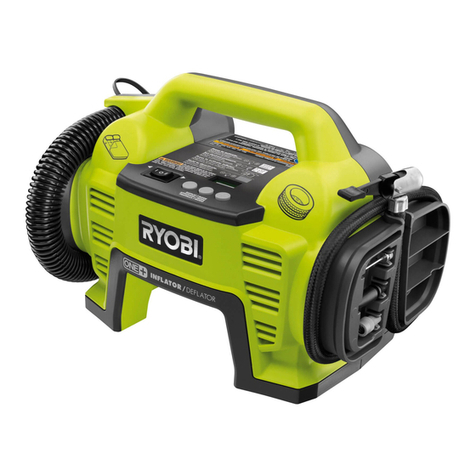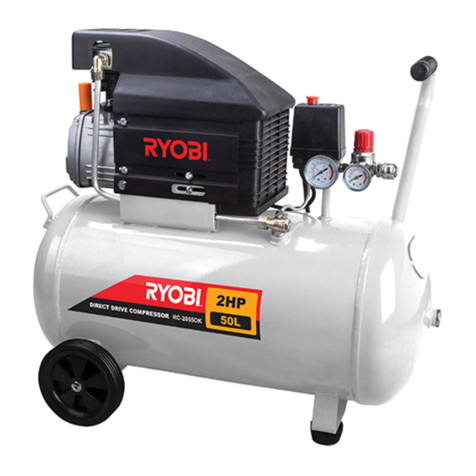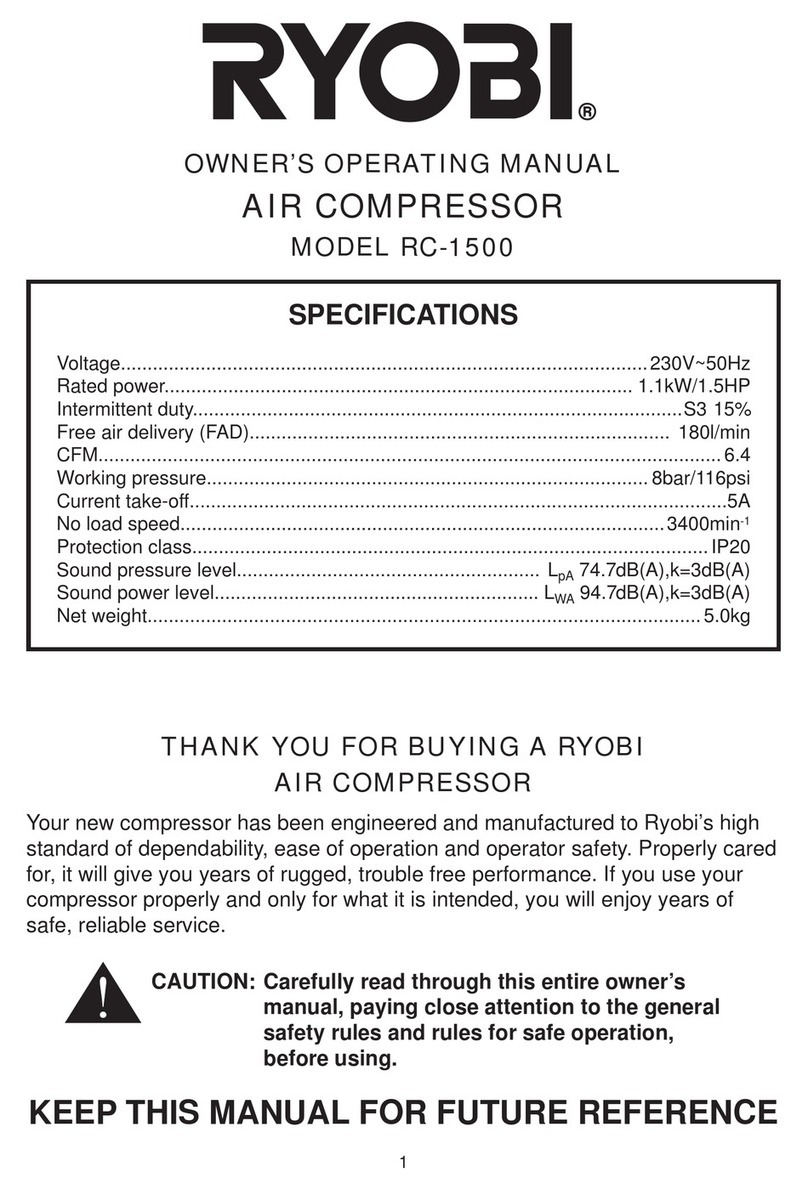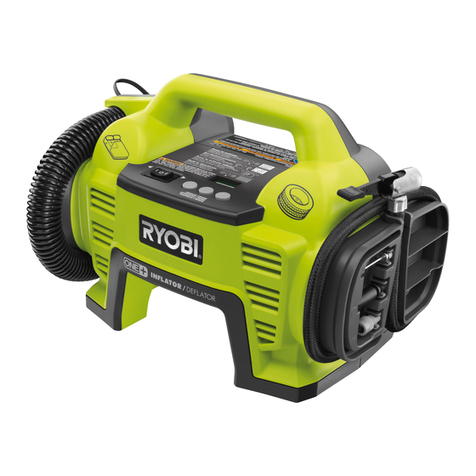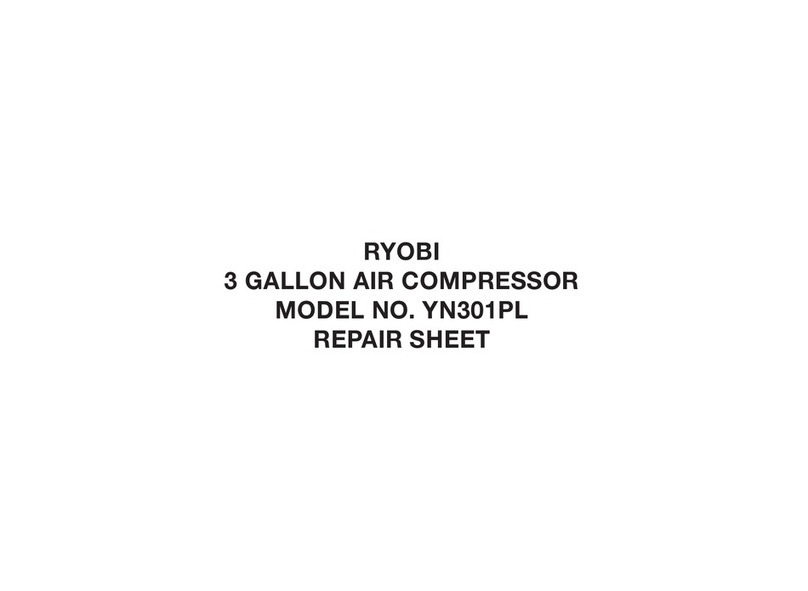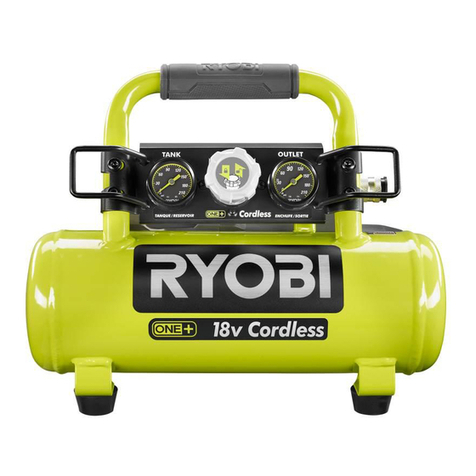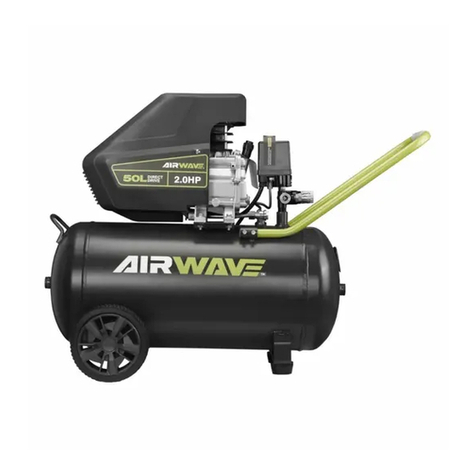
AIR COMPRESSOR SAFETY WARNINGS
■Know your product. Read operator’s manual carefully.
Learn the product’s applications and limitations, as well
as the specific potential hazards related to the product.
Following this rule will reduce the risk of electric shock,
fire, or serious injury.
■Drain the air tank of moisture after each day’s use. If the
product will not be used for a while, it is best to leave the
drain valve open until next use. This will allow moisture
to completely drain out and help prevent corrosion on
the inside of air tank.
■Risk of fire or explosion. Do not spray flammable liquid
in a confined area. Spray area must be well ventilated.
Do not smoke while spraying or spray where spark or
flame is present. Keep the product at least 10 m (33
feet) from the spraying area and all explosive vapours.
■Risk of bursting. Do not adjust regulator to result
in output pressure greater than marked maximum
pressure of attachment. Do not use at pressure greater
than 8.3 bar.
■To reduce the risk of electric shock, do not expose the
product to rain. Store the product indoors.
■Inspect the air tank yearly for rust, pin holes, or other
imperfections that could cause it to become unsafe.
■Never weld or drill holes in the air tank.
■Make sure the hose is free of obstructions or snags.
Entangled or snarled hoses can cause loss of balance
or footing and may become damaged.
■Use the product only for its intended use. Do not alter or
modify the product from the original design or function.
■Always be aware that misuse and improper handling
of the product can cause injury to yourself and others.
■Never leave the product unattended with the air hose
attached to a tool.
■Never point any air tool toward yourself or others.
■Do not operate the product if it does not contain a
legible warning label.
■Do not continue to use the product or hose which leaks
air or does not function properly.
■Always disconnect the air supply and remove the
battery pack before making adjustments, servicing the
product, or when the product is not in use.
■Do not attempt to pull or carry the product by the hose.
■Your tool may require more air consumption than the
product is capable of providing.
■Always follow all safety rules recommended by the
manufacturer of your air tool, in addition to all safety
rules for the air compressor. Following this rule will
reduce the risk of serious personal injury.
■Never direct a jet of compressed air toward people or
animals. Take care not to blow dust and dirt towards
yourself or others. Following this rule will reduce the risk
of serious injury.
■Do not use the product to spray chemicals. Your lungs
can be damaged by inhaling toxic fumes. A respirator
may be necessary in dusty environments or when
spraying paint. Do not carry the product while painting.
■Inspect product cords and hoses periodically and,
if damaged, have them repaired at your nearest
authorised service centre. Constantly stay aware of
cord location. Following this rule will reduce the risk of
electric shock or fire.
■Check for misalignment or binding of moving parts,
breakage of parts, and any other condition that may
affect the product’s operation. If damaged, have the
product serviced before using. Many accidents are
caused by poorly maintained products.
■When fixed guards have to be removed for periodic
maintenance or repair, their fixing systems shall remain
attached to the guard or machinery when the guards
are removed.
■Never store a tool with an air hose connected. Storing
the tool while connected to an air supply can result in
unexpected operation, firing or movement and possible
serious personal injury.
■Protect your lungs. Wear a face or dust mask if the
operation is dusty. Following this rule will reduce the
risk of serious personal injury.
■Save these instructions. Refer to them frequently and
use them to instruct others who may use the product.
If you loan someone the product, loan them these
instructions also.
■Operate the product from the front of the control panel.
■When the product is in operation, many parts of
machine may cause a high temperature. Use necessary
personal protection equipment such as gloves to avoid
injuries resulting from a high temperature.
■The product is not intended for use by persons
(including children) with reduced physical, sensory
or mental capabilities, or lack of experience and
knowledge. Children should be supervised to ensure
that they do not play with the product.
BATTERY AND CHARGER SAFETY WARNINGS
WARNING
To reduce the risk of re, personal injury, and product
damage due to a short circuit, never immerse your
tool, battery pack or charger in uid or allow a uid to
ow inside them. Corrosive or conductive uids, such
as seawater, certain industrial chemicals, and bleach
or bleach-containing products, etc., can cause a short
circuit.
■Recharge only with the charger specified by the
manufacturer. A charger that is suitable for one type
of battery pack may create a risk of fire when used with
another battery pack.
■Use power tools only with specifically designated
battery packs. Use of any other battery packs may
create a risk of injury and fire.
■When battery pack is not in use, keep it away
from other metal objects, like paper clips, coins,
keys, nails, screws or other small metal objects,
which can make a connection from one terminal to
another. Shorting the battery terminals together may
cause burns or a fire.
2

